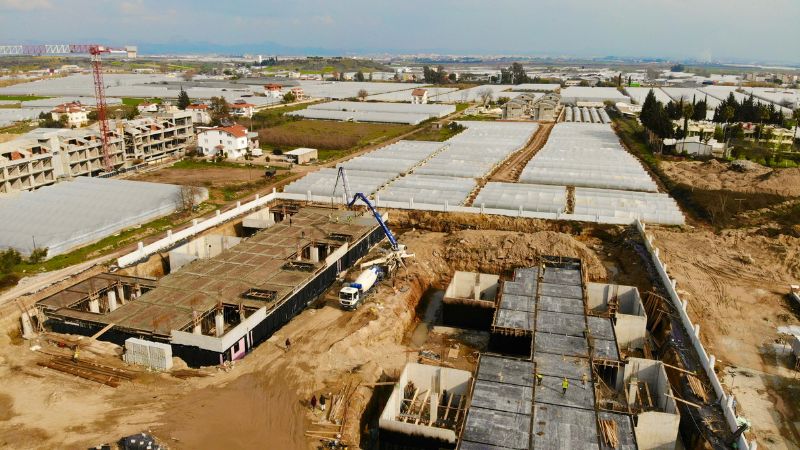
How Foundations Support Development Projects in India
Chrysalis Services
Introduction
India’s social sector is so interesting as it is growing at such a fast rate. While government spending sets the foundation for large-scale development, foundations—powered by CSR, philanthropy, and private funding, bring in the agility, creativity, and long-term thinking needed to drive deeper impact.
- But how do foundations make their investment decisions?
- How do they finance themselves?
- How can development practitioners and NGOs align with them?
Let’s delve into these questions using recent statistics and initiatives that exemplify how foundations drive development initiatives in India.
What is the size of the development finance universe in India?
India’s total social sector expenditure in FY 2023–24 was around ₹25 lakh crore (~US $300 billion) with a 13% CAGR growth. But 95% of it is public expenditure.
How much do foundations, philanthropists, and CSR units contribute?
The non-governmental segment—consisting of CSR, family philanthropy, and foundations—gives ₹1.3 lakh crore (~US $16 billion) and is likely to grow 10–12% yearly (Bain, 2025).
Key Insight: Public funds can deliver scale, but private foundations can support innovation, speed, and targeting underserved groups.
How are foundations organized in their funding?
Foundations in India are typically categorized into three groups:
- Corporate Social Responsibility (CSR) foundations,
- family or ultra-high-net-worth individual (UHNI) foundations,
- and independent philanthropic trusts.
What Do CSR Foundations Care About?
Some organizations are going beyond compliance.
- Adani Foundation’s UP rooftop solar project made it possible to earn ₹800–₹5,000 per month as a rural household income.
- HCL Foundation raised its CSR expenditure to ₹24 crore in 2025 to fund grassroots NGOs.
- 75 NASSCOM tech companies invested ₹5,443 crore in education, upskilling, and climate through 2,600+ projects.
These CSR arms are now more like grant-makers, offering funding partners with long-term capital and pilots of innovation.
What is the Role of Family Foundations and UHNI Philanthropists?
65–70% of CSR expenditure (~₹18,000 crore) now originates from family business. Also, family offices (such as Premji, Nilekani, Shiv Nadar) have increased from ~45 in 2018 to ~300 in 2024, with anticipated philanthropic flows of ₹50,000+ crore in the next five years.
Do the donors support projects only or capacity building as well?
They are increasingly investing in professional teams, providing funding for multi-year grants, and even organizational development.
Tata Trusts contributes ~US $100 million each year, with big health and education initiatives. Infosys Foundation, Reliance Foundation, and JSW Foundation all have specific programs in rural infrastructure, scholarships, and cultural heritage. These foundations are purpose-driven, with solid roots in the community and established credibility.
What Strategies Do Foundations Use to Achieve Maximum Impact?
The majority of the large funders nowadays understand that nonprofits do not just need project funds—they need capacity, infrastructure, and long-term investment.
Axis Bank Foundation sponsors total operating budgets. Rohini Nilekani Philanthropies and CIFF provide OD grants and financial resources. However, reserves or corpus-building are promoted by just ~10% of funders—mainly because of CSR law restrictions.
Organizations such as EdelGive, IndusInd, and Gates Foundation have prioritized DEI as an integral part of their funding models, making grantee selection and implementation inclusive. Major donors are moving more towards multi-year, adjustable grants, recognizing that programs and nonprofits need stability.
What Challenges Do Foundations Face?
Post-2021 FCRA changes have constrained foreign donations by ~3%, causing compliance challenges for grassroots NGOs (GRAAM). As much as CSR funds are rising, states like Bihar, Assam, and most of Northeast India get less than 1% of CSR expenditures (IDR, 2024).
India needs to spend 13% of GDP in the social sector to reach SDGs by 2030, but it is ~8–9% currently, and it has a ₹14 trillion gap for FY 2023–24 (NITI Aayog through NDTV).
What’s the Way Forward? How are partnerships used to fund?
Public-private-philanthropic partnerships like Tata Trusts + Pfizer cancer programs are a great example of how infrastructure, tech, and capital can create scalable, systemic change. Data-based CSR initiatives can pick out risk zones and empower local NGOs in Bihar, Assam, Chhattisgarh, and elsewhere.
Redesigning CSR guidelines to permit reserve creation, core support, and donor-family flexibility may facilitate billions of impact capital to move more smoothly.
What Services Can Chrysalis Offer in This Environment?
Chrysalis Services can be the catalyzing force for good and an important bridge between the changemakers and funders by:
- Establishing donor-congruent programs for NGOs
- Assisting supporters with grant design
- Monitoring & Evaluation (M&E) and impact planning
- Fundraising supports to NGOs
- Impact Assessments
- Empowering
- nonprofit expansion through capacity development.
We at Chrysalis Services are committed to building the ecosystem that builds India.
Would you like nonprofit donor-aligned funding models?
Are you a CSR champion or philanthropist who wants to invest with more purpose?
Let’s discuss.
Sources & References
India Philanthropy Report 2025 – Bain & Company & Dasra https://www.bain.com/insights/india-philanthropy-report-2025
75 tech companies spearheaded over 2,600 CSR projects – Nasscom Foundation
HCL Foundation expands CSR budget to ₹24 crore – Economic Times https://economictimes.indiatimes.com/tech/technology/hclfoundation-expands-csr-program-budget-to-rs-24-crore/articleshow/121339578.cms
Adani Foundation rooftop solar program in Amethi – Times of India https://timesofindia.indiatimes.com/city/lucknow/solar-rooftop-initiative-empowers-amethi-village-under-crs-fund/articleshow/121040975.cms
CSR giving concentration among top 200 firms – Outlook Business https://www.outlookbusiness.com/planet/industry/csr-top-200-companies-funding-disparity-give-grants-report
Tata Trusts & Pfizer partnership in cancer care – Financial Times https://www.ft.com/content/0229b5ce-341b-47d1-8675-1fd2b02db4da
Sir Ratan Tata Trust – Official Website of Tata Trusts: https://www.tatatrusts.org
Infosys Foundation – Official Website: https://www.infosys.com/infosys-foundation.html
Reliance Foundation – Official Website: https://www.reliancefoundation.org
JSW Foundation – Official Website: https://www.jsw.in/foundation
How funders build resilient nonprofits in India – Alliance Magazine https://www.alliancemagazine.org/blog/how-leading-funders-build-strong-resilient-nonprofits-in-india
Foreign Funding & FCRA impact – GRAAM https://graam.org.in/the-changing-philanthropic-landscape-in-india-is-it-beneficial-for-npos-and-indias-development
Geographic disparity in climate philanthropy – India Development Review (IDR) https://idronline.org/article/philanthropy-csr/unpacking-climate-philanthropy-in-india
10 Years of CSR Evolution in India – NDTV https://www.ndtv.com/opinion/decade-of-transformational-changes-in-indias-csr-landscape-5231337
Private Philanthropy Growth Trends – IASPoint https://iaspoint.com/growth-of-private-philanthropy-in-india-2025
Funding Gap & GDP shortfall for SDGs – Livemint https://www.livemint.com/news/india-social-sector-funding-philanthropy-corporate-social-responsibility-csr-gdp-social-sector-spending-family-charity-11740645806310.html
India Philanthropy Trends & Family Offices – Elathar https://elathar.com/en/india-philanthropy-report-2025-insights-and-trends
